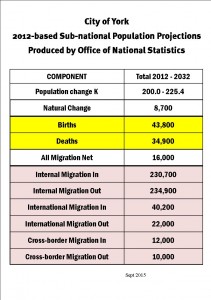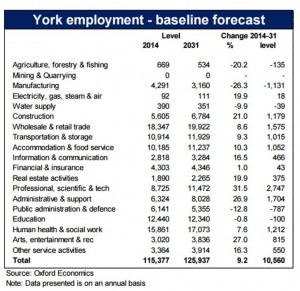A York Council working group will meet this evening to discuss the numbers to be used in drawing up a new Local Plan.
Attention is likely to focus on the number of additional houses being provided to accommodate 900 additional foreign migrants which the Office of National Statistics say will come to the City each year.
While many of these are transient, and simply reflect the increasing number of foreign students that have passed through local Universities over the last decade, there will be some scepticism about whether the expansion of higher education in the City can – or should – continue for the foreseeable future.
York has slipped out of the “top ten” UK Universities this year. There will be some who believe that is a consequence of chasing lucrative overseas student numbers.
A more convincing paper has been provided for today’s meeting by Oxford Economics (OE). It is an update of the paper that they produce a year ago. The employment forecasts have been reduced. This means that less land will need to be allocated for economic development over the next 20 years.
OE are forecasting that there will be 11,200 gross (10560 net) jobs created in the City by 2031 with the economy growing by 50%.
.
The economists forecast a growth in population from 203,701 in 2014 to 223,786 in 2031 (0.6% pa)
There are currently 763 job seekers registered in York. Even allowing for some hidden (long term) unemployed and a reduction in outward commuting from the City, it does look like the York may face a labour shortage over the next few years. Hence the pressure for more inward migration.
Unless sustainable growth assumptions are used, it looks like York’s economy may overheat, with falling investment levels a likely consequence.
A net increase in jobs of 700 pa would generate a demand for less than 600 additional homes each year.
This is a paradox that the Council will have to reconcile housing and employment needs in its next draft Local Plan.


